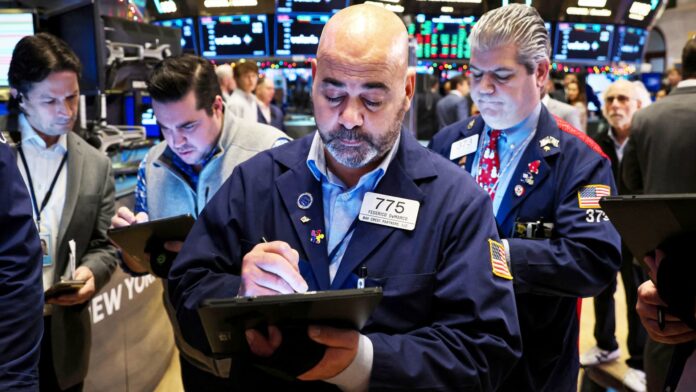The tide of inflation and Fed rate hikes appears to finally be turning, and that means investors may want to reevaluate some of the strategies that worked in 2022. The November consumer price index report on Tuesday was surprisingly cool , leading to a pullback in Treasury yields. And while the Federal Reserve on Wednesday raised its projected terminal rate above 5% for next year, the central bank did implement a smaller rate hike in December than in its previous meetings. The combination of cooling prices and a less aggressive Fed could put pressure on a group of ETFs designed to counter inflation or rising rates — or both — that has attracted significant investor interest this year. Rising rate ETFs For example, the Simplify Interest Rate Hedge ETF (PFIX) , which has more than $350 million in assets under management, fell 2.8% on Tuesday. The FolioBeyond Rising Rates ETF (RISR) , which has raked in more than $80 million this year, was off 1.3%. The portfolio managers at several of these funds said that it was too early to declare that inflation was defeated. Harley Bassman, a managing partner at Simplify, said rates could stay elevated even as inflation declines. “If we have inflation at 4 — which is down by half from where it was two months ago — will the Fed cut rates in July? … I don’t think so,” Bassman said, pointing to high wages and a tight labor market as an area that could keep inflation from falling to the Fed’s target. The Simplify ETF, which has a total return of more than 71% this year, combines inflation-protected Treasurys, or TIPS, with a derivative strategy that serves as a bet that long-term Treasury yields will rise. Dean Smith, chief strategist at FolioBeyond, said he is bullish on his firm’s rising rates fund if rates stabilize instead of fall, adding that he envisions the fund as a long-term piece of investor’s portfolios due to its diversifying qualities and dividend. The fund holds Treasurys and interest-only mortgage backed securities, which rise in value in tandem with rates. “The great thing about this fund is it’s got negative correlation to most of the rest of the fixed income market, and even has negative correlation to equities. So adding this to an existing portfolio is going to have huge diversification benefits,” Smith said. Bet on falling rates, inflation? For Investors who are comfortable betting on rates and inflation continuing to fall, there may be simpler and cheaper options. Treasury funds like the iShares 20+ Year Treasury Bond ETF (TLT) and Vanguard Intermediate Term Treasury ETF (VTIP) have expense ratios of 0.15% and 0.04%, respectively, and will rise in value as yields fall. The iShares TIPS Bond ETF (TIP) has an expense ratio of 0.19% and gives investors a little more protection if inflation stays stubbornly high. And if a soft landing occurs, with inflation falling and the economy avoiding a recession, corporate bond ETFs like Vanguard Intermediate-Term Corporate Bond ETF (VCIT) of Invesco’s BulletShares series could provide even more of a return as presumed risk of corporate bonds diminishes. There are also inflation-fighting funds that include equities that could be more attractive than the rate plays, as lower rates and a slow growth economic environment may be the sweet spot for the high cash flow stocks that make up those portfolios. However, investors should be aware of the exposure to commodities, including oil, in the funds. The actively managed AXS Inflation Sensitive ETF (PPI) , for example, currently has more than 2% of its fund in each of several different oil names, including APA Corp. and Marathon Oil . The success of China’s reopening could also play a role here. If China is able to roll back its zero Covid policies and fire up its industrial economy to pre-pandemic levels, that could put upward pressure on demand that makes commodities rise and complicate the decline of global inflation. Sector ETFs could be a way to play this theme while minimizing the damage from possible swings in oil prices. In the iShares 2023 outlook , the firm recommended its U.S. Infrastructure ETF (IFRA) as a play in the expectation that inflation would decline in 2023 but still remain above the Fed’s target level.
© heardonwallstreet.com


